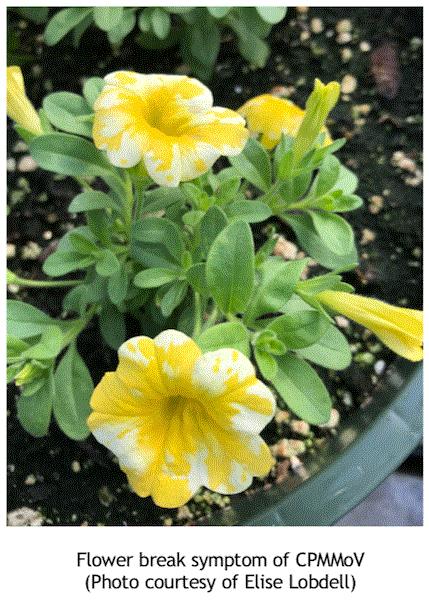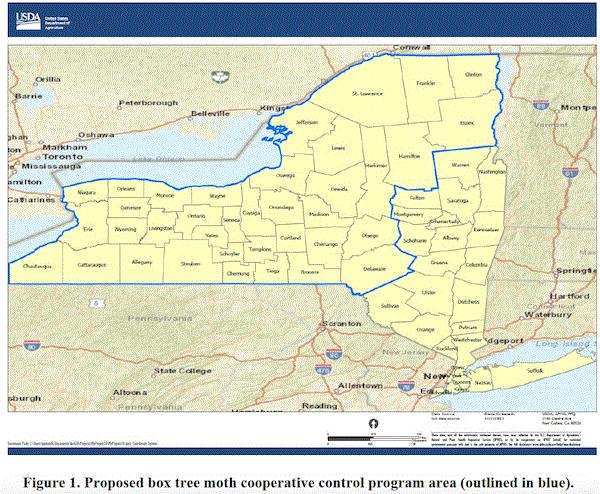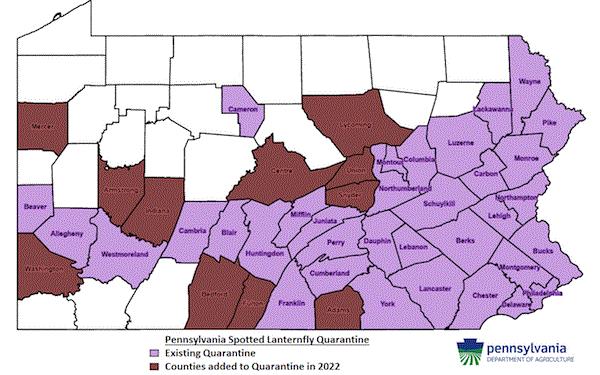Managing aphids on spring crops
I’ve been getting several emails and calls about aphids on annuals, a combination that’s almost impossible to avoid as spring arrives. Honeydew and sooty mold, not to mention those silvery shed skins, can easily ruin a spring crop just as the plants are ready for market.
In my opinion, aphids aren’t that difficult to control. The key is to anticipate their arrival and catch them before the population gets out of hand. Cultural control methods often aren’t practical when dealing with aphids, so my recommendations are based mainly on insecticides and biological control.
Neonicotinoids are effective tools against aphids; they’re especially useful when dealing with aphids infesting hanging baskets of calibrachoa or pansy. One drench treatment and you (usually) don’t have to worry about them for the season. Many folks limited in the use of neonicotinoids are drenching with Altus (flupyradifurone) and Kontos (spirotetramat). I haven’t tested Mainspring (cyantraniliprole) or Sarisa (cyclaniliprole) as a drench for aphids, but reports from my colleagues suggest good efficacy with Mainspring.
One word of caution when using these alternatives in drenches: They can take longer to show activity than neonicotinoids, so plan to treat earlier or expect to see effects a little later than you typically do with Safari (dinotefuran) or Marathon (imidacloprid). And, okay, a second word of caution: Consider lightly irrigating (but not to leaching) after drenching so that the insecticide can soak through the media.
Y’all can also spray. Although acephate and bifenthrin are still very effective, I think we should move away from using them because of the long REI and potential impact on biocontrol (if you're doing biocontrol). There are a lot of other options. Folks who use neonicotinoids or any of the systemic insecticides I mentioned before can also use them for spraying. TriStar (acetamiprid) is also a neonicotinoid, but it’s not registered for drenches; this product works well as a spray. Remember that if you’d already drenched, you shouldn’t spray the same product.
Other products that work well as a spray include Aria (flonicamid), Endeavor (pymetrozine), Rycar (pyrifluquinazon), Ventigra (afidopyropen), XXpire (sulfoxaflor + spinetoram), Avid (abamectin), Hachi-Hachi (tolfenpyrad), azadirachtin, insecticidal soap and horticultural oil. Click HERE for an article on the efficacy of Aria, Endeavor, Rycar and Ventigra against potato aphid and chrysanthemum aphid.
Adding an adjuvant and achieving thorough spray coverage can improve greatly treatment efficacy. Talk to your biocontrol agent suppliers about your spray program if you employ biocontrol in your operation (for aphids or any other pest).
There are several parasitoid and predator species available for aphid management. Biological control is best employed as a preventive program, but based on my observations, parasitoids and predators don’t perform particularly well in early spring crops. Again, let me repeat—this is my anecdotal observation. I don’t have solid data to back up my observation, nor do I have a good explanation of what I was seeing. The poor performance may be due to either the low temperature or the spring crop we grow.
Spray of biopesticides, such as various products containing Beauveria bassiana, Ancora (Isaria fumosorosea), Grandevo (Chromabacterium subtsugae) and Venerate (Burkholderia spp.) are also effective. Similar to sprays of insecticides, biopesticides are most effective when the aphid population is small and with thorough spray coverage.

A new virus on calibrachoa
Great. One more thing to worry about with your calibrachoa crop in addition to aphids. The new virus is called chili pepper mild mottle virus or CPMMoV. According to an alert from Nora Caitlin and Margery Daughtrey of Cornell University, CPMMoV has been detected in spring calibrachoa crops. Symptoms on calibrachoa include yellow mottling bordered by green, "flower break" (irregular flower color patterns), necrotic spots and general stunting.
Other than the fact that it’s similar to the tobacco mosaic virus, CPMMoV isn’t well known. The host range of CPMMoV is not known, but because of its similarity to tobacco mosaic virus, you should be vigilant if you grow any solanaceous plants. Test strips for tobacco mosaic virus can be used to diagnose this virus.

As a tobamovirus, it’s likely that CPMMoV can survive quite well outside of its host plants. The particles may persist on surfaces that had contact with infected materials or with a person handling infected materials and then transmitted through contact to uninfected plants. The first management step, therefore, is to avoid handling infected plants and then handling healthy plants. Infested plants should be discarded immediately and sanitation protocols should be established so that workers don’t transmit the virus on themselves or their tools. Surfaces and tools should be disinfected with a 10% bleach solution (one part 6% sodium hypochlorite bleach, plus nine parts water) or a sanitizer (such as 2% Virkon S).
Click HERE to read the alert from Nora and Margie, and for more great pictures of the symptoms.

APHIS to accept comments on BTM plan
Last week, USDA-APHIS released its draft environmental assessment for its box tree moth (BTM) control program in New York State. Again, this assessment is issued specifically for parts of New York that border Canada and where BTM has been trapped and detected in the landscape. (Click HERE to see my newsletter reporting on the discovery.) With the release of the draft assessment, APHIS also opens a 30-day comment period for the draft.
The main goal of the document is to describe possible environmental impacts of a proposed BTM management program. Although the control program isn’t applicable to all states, the document provides a glimpse of what APHIS may plan to do if BTM becomes more widespread.

APHIS presented three management alternatives. The first one is “do nothing” or a no-action alternative. Obviously, this alternative isn't acceptable because it’ll pose huge risks and cause enormous losses to the green industry.
The second alternative is the Slow-the-Spread alternative, which relies on trapping, surveying and quarantining to prevent the spread of BTM into other areas. You and I, and obviously APHIS as well, know this approach won’t be sufficient.
The alternative preferred by APHIS is a management approach that combines quarantine, survey and control actions, which include removing or treating infested plants in nurseries and landscapes. Three insecticides are proposed for this joint program between APHIS and New York State Department of Agriculture and Markets—Acelepryn (chlorantraniliprole), Conserve (spinosad) and Javelin (Bacillus thuringiensis kurstaki, which also has other brand names).
APHIS didn’t propose cultural or biological control approaches because these alternatives are either unavailable, unregistered or suitable only for a small group of infested plants.
Click HERE for a press release on the draft environmental assessment and information on how to submit comments. The comment period is opened until the end of April. Click HERE if you want to assess the document directly (enter APHIS-2022-0018 in the search box).
I can’t describe all the little tasty morsels (such as surveying and quarantine procedures, and all the laws involved and considered) in this document. It will be something that will put you to sleep. I don’t need to read the 40-page document to help me sleep anyway. (I have a better option—I recommend enthusiastically "This is Biology" by “Uncle Ernie” Mayr.) Ask my wife. She’ll tell you that I often go silent in the middle of our chat before bed. Dead asleep. Wait for it … here comes the snore from the man and the dog.

SLF quarantine expanded in PA
What's not to snore at is the spotted lanternfly (SLF). It’s making news again.
The Pennsylvania Department of Agriculture announced that it has imposed SLF quarantine in additional counties. As of March 2022, 11 counties (Adams, Armstrong, Bedford, Centre, Fulton, Indiana, Lycoming, Mercer, Snyder, Union and Washington) have been added. Currently, more than 60% of Pennsylvania’s counties are under SLF quarantine.
Click HERE for more information on SLF quarantine in Pennsylvania. Click HERE to see a current map of SLF distribution in the United States.

See y'all later!

JC Chong
Professor of Entomology at Clemson University
This e-mail received by 27,118 subscribers like you!
If you're interested in advertising on PestTalks contact Kim Brown ASAP!